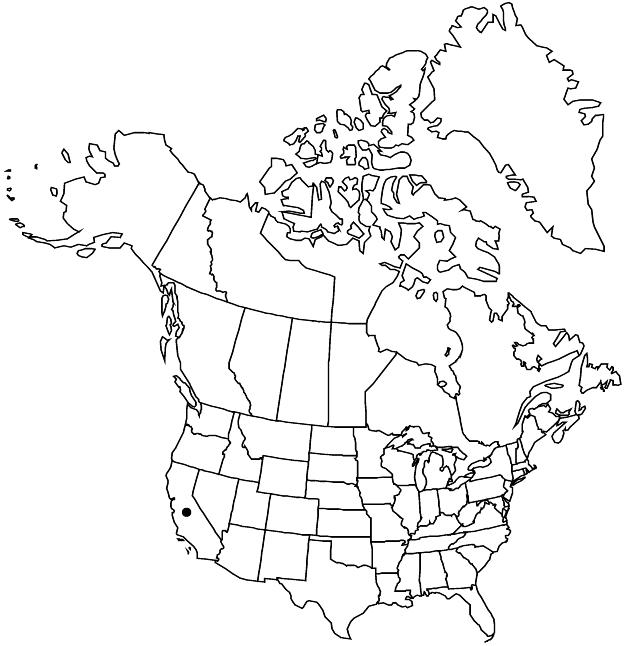Difference between revisions of "Chorizanthe fimbriata"
Proc. Acad. Nat. Sci. Philadelphia 4: 17. 1848.
FNA>Volume Importer |
imported>Volume Importer |
||
| Line 55: | Line 55: | ||
|publication year=1848 | |publication year=1848 | ||
|special status= | |special status= | ||
| − | |source xml=https:// | + | |source xml=https://bitbucket.org/aafc-mbb/fna-data-curation/src/2e0870ddd59836b60bcf96646a41e87ea5a5943a/coarse_grained_fna_xml/V5/V5_973.xml |
|subfamily=Polygonaceae subfam. Eriogonoideae | |subfamily=Polygonaceae subfam. Eriogonoideae | ||
|genus=Chorizanthe | |genus=Chorizanthe | ||
Latest revision as of 22:15, 5 November 2020
Plants erect to spreading, 1–3(–3.5) × 1–2.5 dm, pubescent and minutely glandular. Leaves basal; petiole 0.5–3(–5) cm; blade elliptic to obovate or spatulate, 1–3(–3.5) × 0.2–1(–2.5) cm, thinly pubescent adaxially, sparsely tomentose abaxially. Inflorescences open, reddish; bracts 3 at proximal node, otherwise 2, sessile, scalelike, linear, acicular, often acerose, 0.1–0.5 cm × 0.5–1 mm, awns straight, 1–2 mm. Involucres 1(–5+), reddish or greenish, cylindric, not ventricose, 4–6(–7) mm, finely corrugate, with thin hyaline margins between teeth, sparsely to densely pubescent; teeth divergent, unequal, 3 longer ones 1–3 mm, alternating with 3 shorter ones 0.3–1 mm; awns straight, unequal, 3 longer ones 1–2.5(–3) mm, shorter one (0.3–)0.5–1.5 mm. Flowers exserted; perianth bicolored, with floral tube yellow to yellowish white and tepals white to rose, becoming dark rose to red with age, cylindric, 6–9(–10) mm, glabrous abaxially except for few to several scattered hairs ca. midlength along midribs; tepals connate 1/2 their length, monomorphic, oblong, fimbriate to laciniate apically; stamens 9, included; filaments distinct, 3–8 mm, glabrous; anthers pink to red, oblong, 0.5–0.7 mm. Achenes brown, lenticular, 3–4 mm.
Distribution

Calif., nw Mexico.
Discussion
Varieties 2 (2 in the flora).
Chorizanthe fimbriata is our only representative of subsect. Flava, a taxon of six species otherwise confined to Baja California. These are the most elegant of the annual species in their remarkable flowers. The flower color, the fine divisions of the tips of the tepals, plus the handsome habit make them of potential horticultural interest for the “need-to-be-challenged” gardeners. In addition to C. fimbriata var. laciniata, C. pulchella Brandegee would be a worthy introduction. Chorizanthe flava Brandegee has bright yellow flowers that contrast dramatically with its reddish mature inflorescence branches. The large (7–9 mm) flowers of C. mutabilis Brandegee are a wonder to behold, the yellow floral tube contrasting with the white to red of the tepals themselves.
Selected References
None.
Key
| 1 | Tepals fimbriate apically, distal segments linear to lanceolate, broader than lateral segments; perianths 6-7(-8) mm | Chorizanthe fimbriata var. fimbriata |
| 1 | Tepals laciniate apically, distal segments linear, scarcely broader than lateral segments; perianths 8-9(-10) mm | Chorizanthe fimbriata var. laciniata |